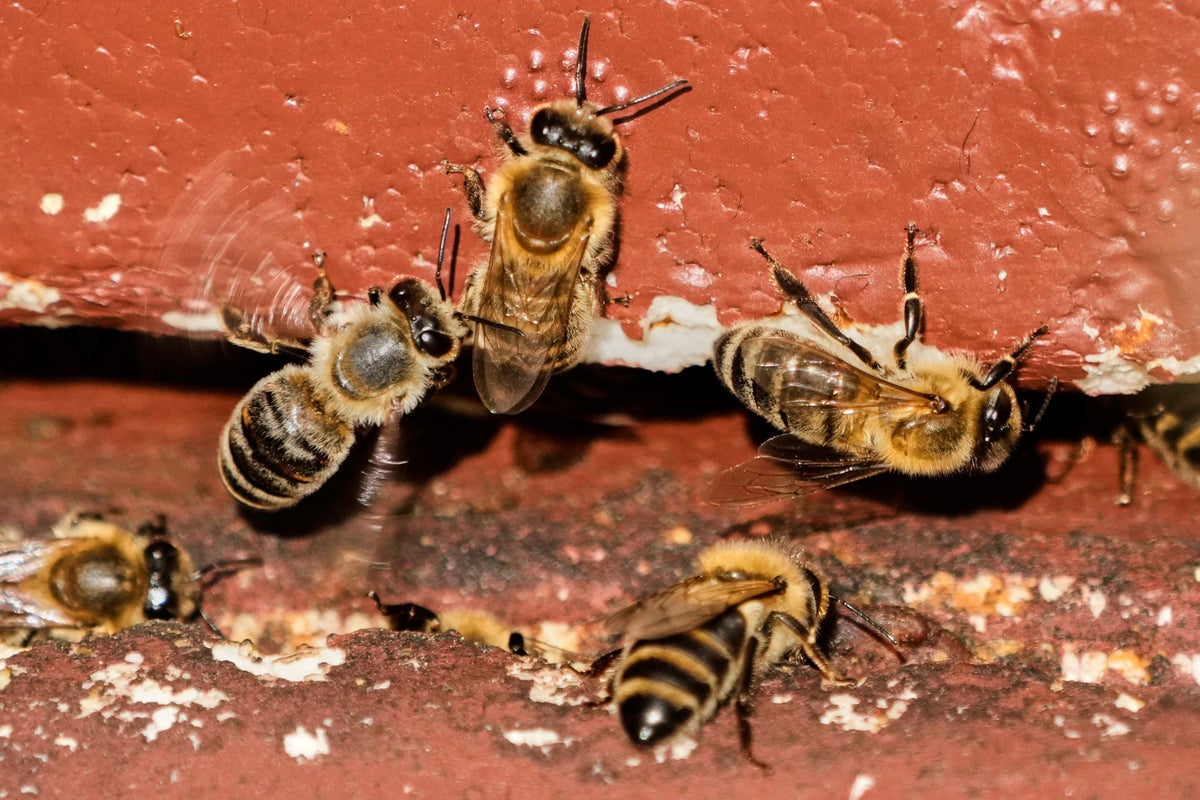For decades, beekeepers have fought a tiny parasite called Varroa destructor, which has devastated honey-bee colonies around the world. But an even deadlier mite, Tropilaelaps mercedesae – or “tropi” – is on the march. Beekeepers fear it will wreak even greater havoc than varroa – and the ripple effects may be felt by the billions of people around the world who rely on honey bee-pollinated plants.
From Asia to Europe
Tropi’s natural host is the giant honey-bee (Apis dorsata), common across South and Southeast Asia. At some point, the mite jumped to the western honey-bee (Apis mellifera), the species kept by beekeepers around the world. Because this host is widespread, the parasite has steadily moved westwards.
It has now been detected in Ukraine, Georgia and southern Russia, and is suspected to be in Iran and Turkey. From there, it is expected to enter Eastern Europe, then spread across the continent. Australia and North America are also at risk.
Why tropi spreads so fast
Like varroa, tropi is a tiny mite that breeds inside capped brood cells, the life stages of the honey-bee when the late larvae and pupae develop inside honeycomb cells that are sealed by a layer of wax. The mite feeds on bee pupae and transmits lethal viruses, such as deformed wing virus – the deadliest of the bee viruses. But there are crucial differences.
Varroa can survive on adult bees for long periods, but tropi cannot. Outside brood cells, it lives only a few days, scurrying across the comb in search of a new larva.

Because tropi spends more time in capped cells, it reproduces quickly. A capped cell that contains a female varroa will result in one or two mated varroa offspring emerging with the adult bee. Tropi offspring develop faster inside a capped cell than varroa offspring, so a tropi “mother” may result in more offspring emerging than a varroa-infested cell, more quickly overwhelming the colony.
As a result, colonies infested with tropi can collapse far faster than those plagued by varroa.
Current control methods
In parts of Asia where the parasite is already established, small-scale and commercial beekeepers often manage it by caging the queen for about five weeks.
With no eggs being laid, no brood develops, leaving the mites without a food source. This method is practical where beekeepers manage dozens of hives, but not in places like Europe where commercial operations often involve thousands.
Another option is treating the beehive with formic acid, which penetrates brood cell caps and kills the mite without necessarily harming the developing bee, provided concentrations are kept low. This treatment may offer beekeepers a practical tool.
Why varroa treatments won’t work
Many wonder whether the chemicals used against varroa could also fight tropi. The answer is, mostly no.
Varroa spends much of its life outside of a capped cell clinging to adult bees, where it comes into contact with mite-killing chemicals known as miticides spread through the colony on bee bodies. By contrast, tropi rarely attaches to adults, instead darting across comb surfaces.
Because of this, it is far less exposed to chemical residues. Treatments designed for varroa are often ineffective against the faster-breeding tropi.
Managing both mites together will be particularly difficult. Combining treatments risks harming colonies or contaminating honey. For instance, formic acid for tropi and insecticides such as amitraz for varroa might interact at even low levels, killing the bees as well as the parasites.
There is also the danger of resistance. Over-use of varroa treatments has already produced resistant strains, reducing the effectiveness of several once-reliable chemicals. Introducing more compounds to fight tropi, without careful integrated pest management, could accelerate this process and leave beekeepers with few effective tools.
The wider impact
The spread of tropi will not only devastate beekeepers but also agriculture more broadly. Honey-bees are critical pollinators of many crops. Heavier hive losses will raise costs for both honey production and pollination services, affecting food prices and availability.
Research is underway in countries such as Thailand and China to develop better management strategies. But unless effective and practical treatments are found soon, the spread of this new mite around the world could be catastrophic.
The story of varroa shows how quickly a single parasite can transform global beekeeping. Tropi has the potential to be even worse: it spreads faster, kills colonies more quickly, and is harder to control with existing methods.
The author would like to acknowledge the contribution of Robert Owen, a beekeeper who completed a PhD on the varroa mite at the University of Melbourne in 2022, to this article.




